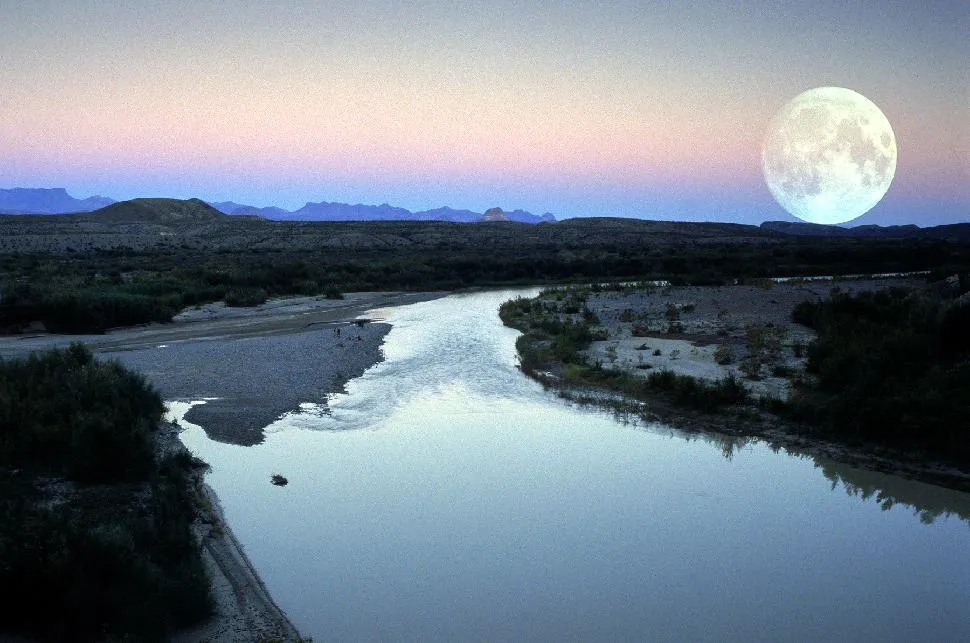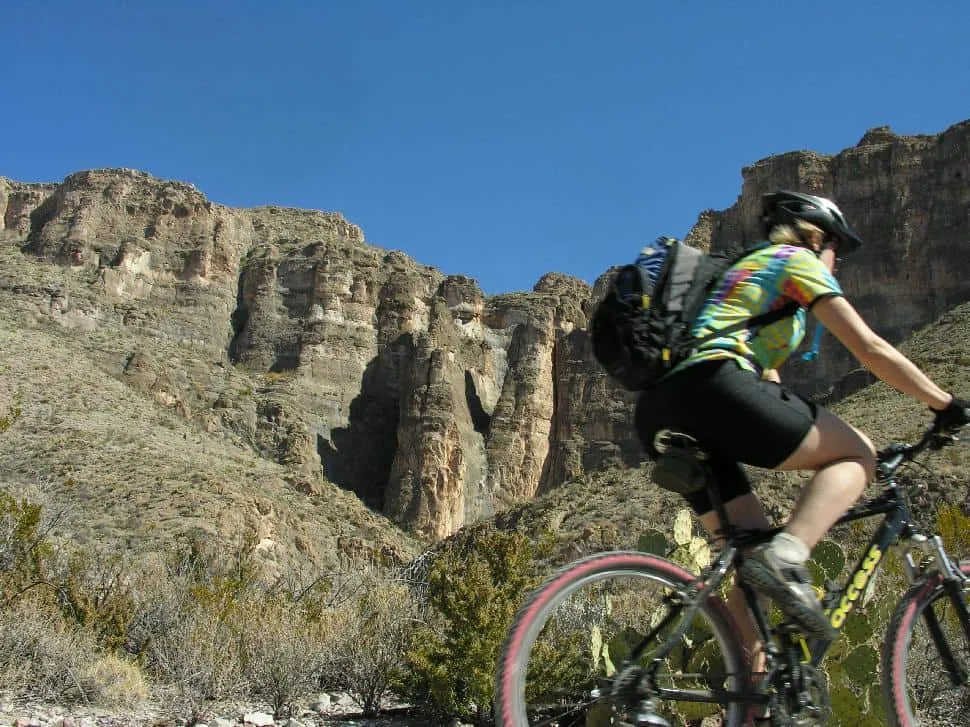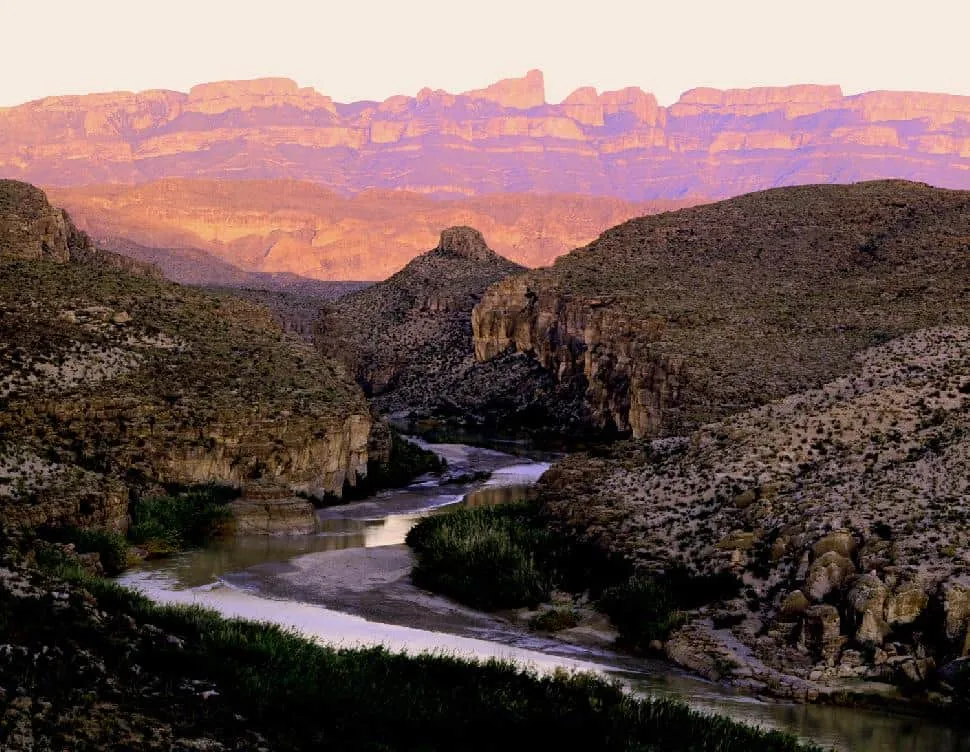Top Outdoor Activities in Big Bend National Park, Texas

Big Bend National Park in Southwestern Texas offers a whole slew of exciting outdoor activities for every sort of visitor.
From 240 km of improved hiking trails to 400 km of water-routes along serene Rio Grande River, there is something for every kind of outdoor adventurer. This particular national park is a place where one will be hard-pressed to experience all of what it has to offer in a day or even a week. So, what exactly is there to do?

Hiking
With over 240 km of improved hiking trails, not to mention the primitive trails not officially on the brochure, there is enough hiking in Big Bend National Park to last hikers a lifetime. These trails can range between something as short as 50 metres around a scenic vista or as long as 53 km that runs through the beautiful desert mountains.
The shortest trail of the park is the Panther Loop, a trail that only measures 50 metres in length and visitors might not even realize they just hiked a trail. It leads through the beautifully maintained desert gardens in front of the Visitors Center at Panther Junction. A hike down this little wonder is perfect for acquainting visitors to the different sort of cacti and vegetation they will see out in the trail. For a short trail with a little more length, the four kilometre Hot Springs Historic Trail is definitely worth checking out. For hikers not interested in the hike as a venue for learning about the area’s history as an early homestead and health resort, the hot springs located along the trail are reason enough to head there. If the Texas heat hasn’t got you down, these springs that are naturally heated to a balmy 40°C are sure to raise your temperature.
For those seasoned hikers that need something with a little more length, the Outer Mountain Loop is the longest trail in the park at 53 km. The major draw about the Big Bend National Park is the feeling of vastness within the park, and this trail delivers every last bit of it. Because of its length, it is usually the most sparsely travelled. The Outer Mountain Loop delivers 100-km views sweeping across the hills, arroyos and mesas of the Chihuahuan Desert with not a sign of civilization in sight. This three-day, two-night hike climbs into and loops around in the south rim of the Chisos Mountain range where hikers can rest under the shade of huge ancient maple, oak and cypress trees while looking at the desert below.
If the longest mountain trail isn’t enough for the most hardened adventurer, there is still yet one more option than old the tried and true trails. Hikers will have to check with the Park Rangers first, but there are series of primitive trails that run through Big Bend National Park comprised of old roads and other trails that were used from the late 1800s until the park was established in the 1940s. Many of these primitive trails are still visible though they are occasionally marred by rock cairns, Park Rangers will only permit visitors to hike these old trails if they are equipped with proper gear including a 1:25,000 topo map and knowledge of the desert. However, there are more than a few park secrets hidden off the developed trails.

River Tours
Hiking through the desert and mountains in Big Bend National Park is a great way to see the wilderness, but many travel to Big Bend for its quintessential experience of floating down the Rio Grande River. Visitors can tour its marvelous towering canyons by raft, kayak or canoe. Within the river’s canyons, lies a variety of hiking adventures for those that would like to stretch their legs. With 400 km of waterways, there is room for any length of trips, ranging from half a day to half-a-month. For those that want to traverse the river themselves, they can bring their own gear or rent from the tour operator. For those that do not want to have to deal with the logistics of the trip, these tour operators also offer convenient guided tours, though they are all conducted on rafts. The Rio Grande in this area is easy enough for self-paddled kayaks and canoes for first-timers to pick up. Before free paddlers set out, they should be sure to inquire about water levels with Park Rangers or at the tour operator’s centre. The higher the water level is, the faster the flow which can make certain sections particularly rough.
The river has been marked in three different sections, each providing a different sort of journey in its own way. These sections are:
Boquillas Canyon: This route is the longest trip at 53 km, but it offers the gentlest journey, rated Class I to II. There are plenty of sights including canyons walls and desert wilderness as well as ample opportunities for hiking. Most put in at Rio Grande Village and take out at Heath Canyon near La Linda, Mexico.
Mariscal Canyon: This route is the shortest at only 16 km but is also the most remote, so for new rafters it is not the most opportune if an accident were to occur. However, because it is so out there, it offers a length of solitary river with not many other paddlers to share with. Depending on the water level, this stretch is rated Class II to III with one little set of rapids known as the “Tight Squeeze.” Rafts generally put in at Talley and take out in Solis, but both can only be reached by unpaved roads.
Santa Elena Canyon: At just over 32 km, this route is undoubtedly both the most popular and most spectacular river trip. The section is rated Class II to III except when the water levels are high, in which the rapids named the “Rock Slide” become rated Class IV. There are a number of great stopping points along the way; however there is also usually more than a few paddlers about. Visitors usually put in at Lajitas outside of the park and take out near Castolon.

Bicycling
Between the adjacent Lajitas Resort and Big Bend National Park, there is over 160 km of designated single-track bike trail, not counting the endless backcountry. There are routes with all kinds of difficulty for those that want to stretch their peddling legs out.
The Panther Junction to Rio Grande Village route is the easiest of all the routes in the park. Visitors to Big Bend will often notice more than a few bicyclists hanging around Panther Junction as it is one of the major starting points for many different bike trails, some of which can get quite difficult so be careful not to take any wrong turns. Though this 32-km stretch has a few hills, most of the ride is downhill as the elevation drops around 580 metres. The whole route is paved, making it perfect for skinny tires. However, for those that crave a little side trip, around 25 km outside of Panther Junction there is three kilometer stretch of unpaved road that leads right to the hot springs.
Glenn Spring Road offers something a little more difficult and a little less paved. It runs 56 km along the Chisos Mountains for some parts and along the Rio Grande for others, switching between paved and unpaved roads along the way. It hosts around 40 km of unpaved road with about 16 km of paved portions.
For the off-roaders who relish the challenge, the Old Ore Road brings it. This 41-km stretch of strenuous unpaved road gives great views of the Chisos Mountains, but challenging rough and rocky terrain. It is considered the premier ride of Big Bend National Park, but it is definitely not for beginners.

Horseback Riding
Big Bend is Texas, and in Texas the most authentic way to see the countryside and travel around it is on horseback. While the park itself does not have any organized horse riding trails or operators, there are a number of local outfitters that offer trips that range from two hours to multi-day adventures. Big Bend Stables and Lajitas Stables are the most highly praised local outfitters that are licensed to lead horseback tours throughout the hiking trails and back country of Big Bend National Park.
Big Bend Stables specializes in long range rides as well as Saddle and Paddle tours in which visitors ride to the Rio Grande before giving visitors a choice of rafting or canoeing down the river. They only offer one multi-day trip that heads into Big Bend National Park. This four-day trip gently spans flowing waterways and rugged mountain tops seamlessly while showcasing all the broken land in between. Visitors will be treated to camping at the Quick Silver Ghost Town, visit the second highest waterfall in Texas, Madrid Falls, and dally around the turn of the century Crawford-Smith Ranch.
Unlike Big Bend Stables, the Lajitas Stables is all about the short trips. Their longest trip only spans six hours, but all of their rides travel into Big Bend National Park. They offer a beautiful two-hour Rio Grande River view tour that traces the big river itself from atop canyon walls right up to its flat shores. However, for those that have a particular area they want to see in Big Bend, they also allow for their two-hour all-day tour to be customizable, based on what you want to see.

Bird Watching
Is intense hiking, biking or river rafting not quite your style? There are plenty of more academic and leisurely pursuits within Big Bend including bird watching. Big Bend National Park is the most biodiverse park in Texas. Within its boundaries, one can spot more than a few species of butterflies, bats, reptiles, ants and birds. There are over 450 avian species that either live within the park or migrate through at certain points throughout the year. Since the park offers such a diverse number of habitats, from desert mountains and plains to a lush river valley, it provides ideal conditions for a large number of birds.
The park is renowned for hosting a few endemic species of birds, such as the Colima Warbler, Lucifer Hummingbird, Band-tailed Pigeon, Varied Bunting, Flammulated Owl, Elf Owl, Mexican Jay, Green Kingfisher, Pyrrhuloxia and the Crissal Thrasher… but that is only a mere few of the special birds to see.
The park’s resident naturalist Mark Flippo has set up shop in the Visitor’s Center in Panther Junction and from there he has compiled a list of birding hotspots around the park. These sites include The Hot Springs that are rich with wading-, shore- and desert birds, Santa Elena Canyon for a diverse array of different birds and Blue Creek at the foothills of the Chisos Mountains where visitors can spot gray and black-capped vireos and Lucifer hummingbirds.

Air Tours
Retired Park Ranger and pilot Marcos Paredes has used his skills to provide the perfect solution for those wanting to see the beautiful sights of Big Bend, but don’t have the body to take the strain of hiking it or even just those who want to see the park from a different angle. Paredes used his special skills to found Rio Aviation to give folks a bird’s eye view of the park that he dedicated so much of his life to. From the Cessna 205, nicknamed “Ol’ Brownie,” passengers are given unobstructed views of the geology in the region such as the dramatic Chisos Mountains reaching towards the sky and the gentle green foothills withering into desert below.
Since Marcos Paredes has such a long history with the park and its staff, Rio Aviation is the only company that offers air tours over the park. For those that want the maximum amount of scenery on their flight, Pederes has a number of recommended routes that visitors can choose from. However, for those with a particular area they want to fly over can customize a flight plan so they can hit up their favourite Big Bend landmarks from the air.














